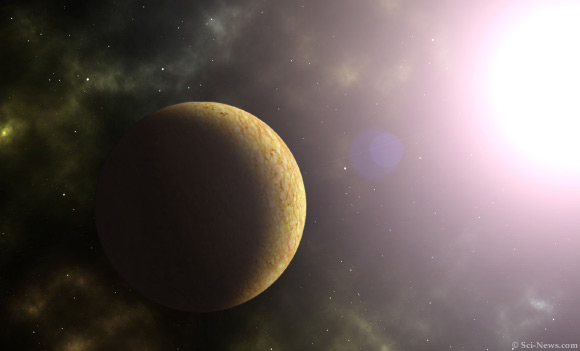Astronomers using data from NASA’s Transiting Exoplanet Survey Satellite (TESS) have discovered two exoplanets transiting inactive red dwarf stars TOI-122 and TOI-237.
Source: Sci News
“M dwarfs (red dwarfs) are interesting targets for transiting exoplanet studies as they provide the best opportunity for finding temperate terrestrial planets,” said University of Colorado, Boulder astronomer William Waalkes and his colleagues.
“All main sequence stars less massive than 0.6 solar masses fall into the M-dwarf category, and they are the most numerous stellar type in the Universe.”
“These stars are very cool and very small, so cool planets have shorter periods, higher transit probabilities and deeper transits than they would around larger stars.”
“M dwarfs tend to host terrestrial exoplanets more often than gas giants, and these terrestrial planets can more readily be found at lower insolations given the low luminosities of M dwarfs,” they added.
“Finally, M dwarfs have such long lifetimes that not a single M dwarf ever formed has yet evolved off the main sequence, making these stellar systems interesting laboratories for very long timescale planetary evolution.”
One of the newfound planets, TOI-122b, is a sub-Neptune planet about 2.7 times the size of Earth.
It orbits TOI-122 (also known as TIC 231702397), an M dwarf that is 33% the radius of our Sun.
The planetary system is located approximately 203 light-years away in the constellation of Tucana.
“TOI-122b likely has a thick atmosphere but on a 5.1-day orbit, it is far interior to the habitable zone of its star and irradiated at over 8x the flux of the Earth,” the astronomers said.
“With a relatively low equilibrium temperature, there could be very interesting atmospheric chemistry in this planet’s atmosphere that might be observable with sufficiently ambitious observing programs.”
The second new planet, TOI-237b, is a super-Earth with a radius about 1.44 times the Earth’s radius.
It circles TOI-237 (TIC 305048087), an M dwarf that is 21% the radius of our Sun and only 3200 K.
The system lies approximately 124 light-years away in the constellation of Sculptor.
“With its 5.4-day orbit, TOI-237b receives nearly 4x Earth insolation from its host star,” the researchers said.
“Given the size of this planet and dimness of the star, mass measurements are likely very difficult to achieve, and we may not know its mass for some time.”
“Even cooler than TOI-122b, this planet cannot be studied with emission spectroscopy, but transmission spectroscopy is possible and we may be able to learn about this planet’s atmosphere, if it has retained one.”
According to the scientists, TOI-122b and TOI-237b are among the cooler exoplanets yet discovered by TESS.
“TOI-122b and TOI-237b are two worlds that span planetary radii not seen in our own Solar System and are interesting laboratories to study planet formation, dynamics, and composition,” they concluded.
A paper on the discovery will be published in the Astronomical Journal.
Source: Sci News

































Leave a Comment
You must be logged in to post a comment.